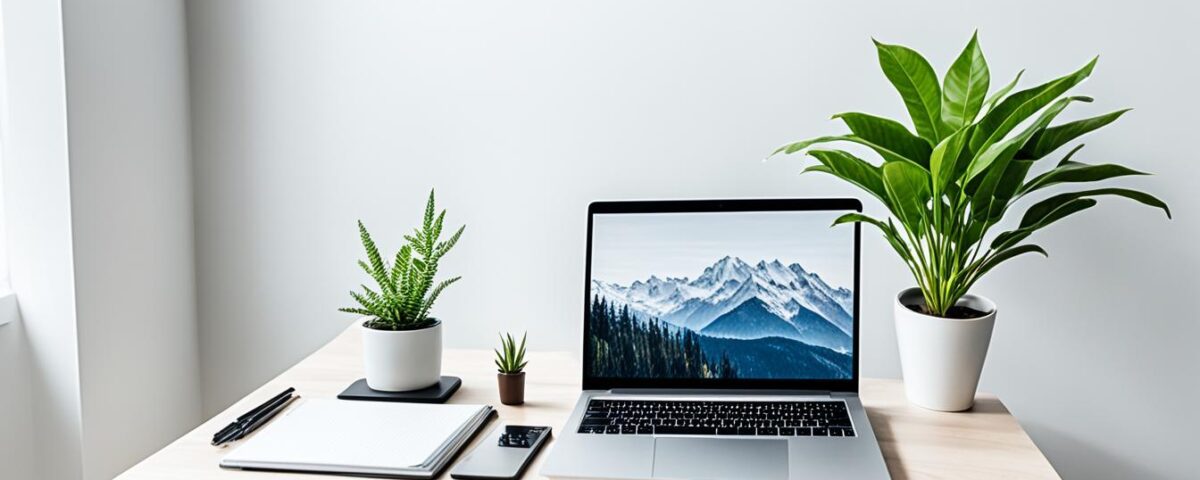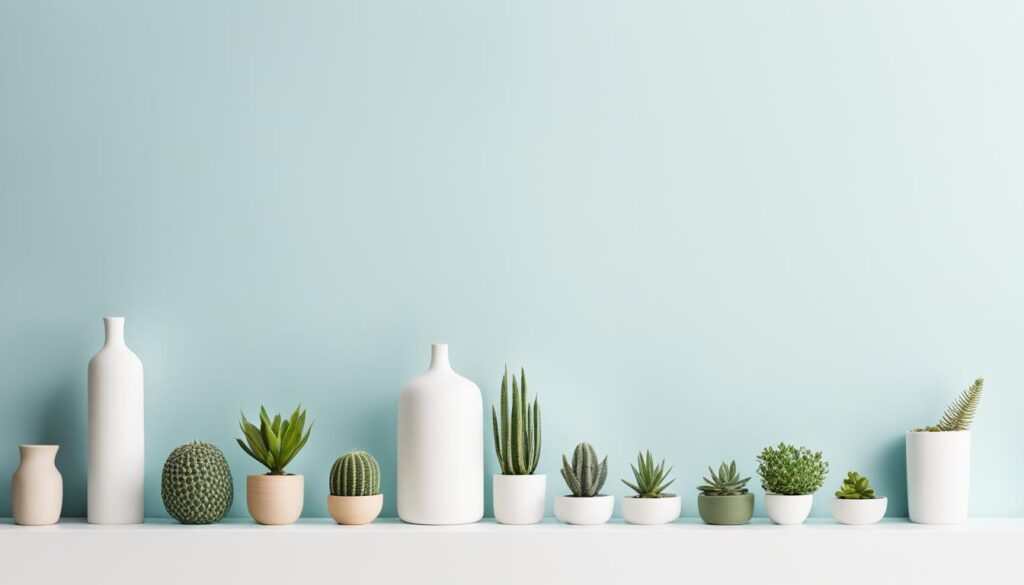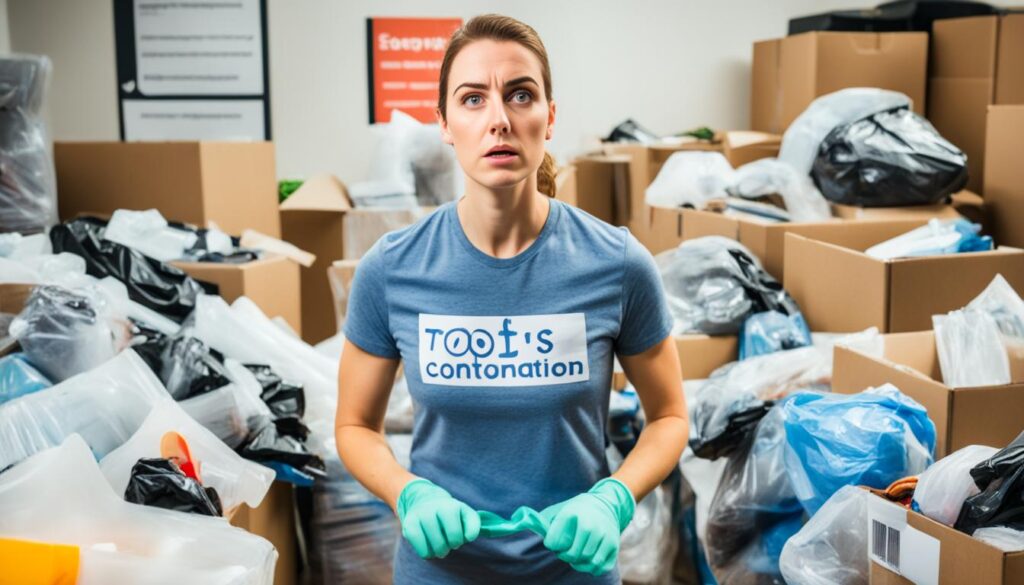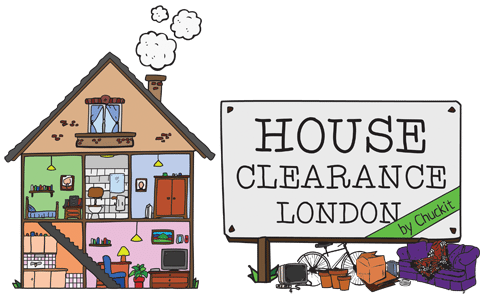Embrace Clutter-Free Living: A Guide to Simplicity

Affordable Waste Removal: Budget-Friendly Disposal Solutions
15th May 2024
Trusted Removal Services: Reliable Moving Assistance
16th May 2024
Welcome to your first step towards a minimalist lifestyle. We invite you to embrace clutter-free living. Discover the profound joy of simplicity in your everyday surroundings.
This guide will explore the benefits of decluttering. We’ll dive into the philosophy of minimalism and offer effective strategies for organising your space and life.
Want to transform your living space or enhance your well-being? Maybe you want to include mindful living practices. Our guide has you covered. It provides all the tools and inspiration for a simpler, more enriching life.
Embrace organisation. Let us show you how decluttering can lead to a serene environment and a minimalist lifestyle.
Understanding Clutter-Free Living
Starting a journey to live without clutter goes beyond tidying up. It’s about choosing simplicity, which changes how we see the world. This way of living boosts our daily life in big ways.
Defining Clutter-Free Living and Its Benefits
To live without clutter means making our space only about what we need and love. This reduces stress and makes our life better by getting rid of what’s not important. It leads to:
- Feeling less anxious and clearer in our minds.
- Doing tasks better because we’re more focused.
- Being more creative and solving problems easier.
- Having a peaceful and inviting home.
Clearing out gives us both cleaner rooms and a calmer mind. It shows that having less can make us feel richer.
The Philosophy Behind Minimalism and Simplicity
The idea of minimalism isn’t taking things away. It’s choosing quality over quantity and focusing on what really matters. This way of thinking encourages us to:
- Be more mindful and live with purpose.
- Think carefully about what we buy and own.
- Find joy in owning fewer, but better, things.
Following these ideas can bring us more happiness and a life with less mess. It teaches us that true wealth is often in the simple things.

The Psychology of Clutter and Its Impact on Well-being
Clutter and mental health are deeply linked. They aren’t just a co-incidence but have a strong psychological connection. The stuff around us mirrors and affects our mind’s state. So, a messy space can lead to a cluttered mind.
Clutter doesn’t just make a physical mess. It also causes stress, anxiety, and a feeling of being overwhelmed. This internal struggle affects our day-to-day life. It makes making choices hard and slows down what we can do.

Emotional attachment to belongings makes clearing out tough for many. To tackle clutter well, we must recognise what holds real meaning to us, versus what adds to our stress. Getting rid of things properly needs thought and care. We must learn to release not just things but the emotions they carry.
- Identify what makes letting go hard—it’s often the memory or emotion linked to the item.
- Think about whether keeping each item is worth the stress it brings.
- If it’s too hard to let go, getting help is a smart choice. Sometimes, our attachment needs more than a simple fix.
Clearing clutter isn’t just about tidying up. It’s a journey that affects us deeply. Knowing why we cling to things helps. It not only makes our space neater but also our minds calmer. This realisation is key for those looking to boost their mental health through tidying.
First Steps Towards a Clutter-Free Home
Starting to declutter can make your home tidier and you feel better. First, look around and decide to make a change. It is about seeing what needs to go and making a promise to tackle it.
Assessing Your Living Space
Seeing where the clutter is the first big task. Go from room to room. Decide what you really need and what’s just taking up space. This helps you know where to focus.
Here are tips for figuring out your space:
- Find items you haven’t used in a year.
- Spot places where clutter builds up.
- Think about how each room should work.
Making the Decision to Declutter
Choosing to declutter is huge. It needs bravery to start but the rewards are worth it. Imagine how calm a clutter-free home would be. This can keep you going.
Creating an Action Plan
After deciding to declutter, planning is next. Set real goals, make time for each task, and sort out how you’ll keep or get rid of things. This planning step is essential.
A good plan includes:
- Goals for each week or month.
- Picking days to tackle cluttered areas.
- Choosing how to sort items – keep, donate, sell, or throw away.

By sorting clutter well, deciding to clear it, and sticking to your plan, your home can become more calm and ordered. A good start and keeping at it are what’s important for a clutter-free life.
Decluttering Techniques for Effective Organization
Starting the decluttering journey might feel scary, but with the right decluttering techniques and organization tips, it gets easier. We’ll explore effective methods for quick and thoughtful clutter clearing. This ensures our space stays nice and tidy.
- Sorting and Categorizing: The first step is to sort things into groups like keep, donate, sell, or toss. This process makes it clear what’s essential. It helps to keep clutter at bay and makes choosing items easier.
- Efficient Storage Solutions: Making the most of our space is crucial for keeping things neat. Items like storage boxes, shelves, and organisers can help a lot. Don’t forget, vertical storage and labels save space and make finding things easier.
- Donating and Selling Belongings: It’s wise to give away or sell stuff we don’t need anymore. This choice uses less rubbish and gives stuff a new life with others. Selling items can help you earn some money too.
Improving how we declutter has big rewards. It’s not only good for our space, but our minds and even those around us. It means more room for new things and a clearer mind for work and fun.

These organization tips can turn our homes into peaceful and efficient places. Changing how we store things or sharing items we don’t need helps more than just making our space look better.
Incorporating Mindful Living Practices
Today’s world is full of noise and speed. It’s crucial to adopt mindful living. This choice creates a peaceful space that changes how we see each day.
Creating a Habit of Intentionality
Starting each day with clear goals is key to living with purpose. Let’s look at how to do this:
- Focusing on what truly matters each day encourages us to live more intentionally.
- Practising mindfulness helps to maintain a moment-by-moment awareness of our thoughts, feelings, and surroundings.
- Regular self-reflection allows us to align our actions with our deeper values and goals.
This strategy makes our choices and actions more meaningful, enhancing our lives.
Including Mindfulness in Everyday Routines
Mindfulness is not just something you do; it’s a lifestyle. Adding little acts of mindfulness to our day can bring joy to simple things:
- Begin your morning with a five-minute meditation to focus your mind.
- Be mindful while cooking, noticing colours, textures, and smells closely.
- Use a gratitude journal at night. Write down three things you’re thankful for. This nurtures positivity.
These mindful acts anchor our emotions and perspective. They significantly improve how we feel and think.
Adopting a Capsule Wardrobe for Simplified Fashion
A capsule wardrobe combines minimalist fashion and sustainable fashion. It makes choosing what to wear easier. You focus on having a few versatile pieces you love. This way, you reduce the clutter and make better choices each day.
A standard capsule wardrobe includes 37 items. These are carefully chosen, like 15 tops, and 9 bottoms. You also have 9 pairs of shoes and the last four items are jackets and dresses. With this selection, getting dressed each day becomes simpler. Plus, you wear only what makes you feel good.
Here’s an easy way to build your wardrobe:
- Start by going through your current clothes. Put them in categories like “LOVE IT AND WOULD WEAR IT RIGHT NOW,” “MAYBE,” “NOPE,” and “SEASONAL.” This helps you see what you truly need.
- Before a new season starts, think about what you’d like to add. About 4 to 8 new pieces are enough. Choose what fits your style best.
- Wear only your 37 chosen items for three months. Avoid buying anything new. This period teaches you to value what you have more.
Building a capsule wardrobe is more than just following strict guidelines. It’s a chance to explore and refine your style in a way that’s good for the planet. This approach reminds us to buy less but better quality. And it encourages acting ethically. So, it’s not just about the clothes. It’s about being mindful with every wardrobe choice you make.
Embracing the Tiny House Movement
The tiny house movement is all about living small. It pushes for sustainable and meaningful lifestyles through downsizing. This means living in spaces that are smaller than what we’re used to. It offers many benefits, both physical and emotional. Let’s look at why this trend is catching on.
Understanding the Pull Towards Downsizing
More and more people are choosing to live in small homes. They want to simplify their lives and reduce their impact on the planet. This choice often leads to financial freedom and a lower environmental impact. It’s in line with the global push to take better care of our planet. By living in a tiny house, they cut costs and focus on what truly matters.
Living Larger in Smaller Spaces
Living in a tiny home doesn’t mean giving up on comfort or looks. The trick is to use space wisely. This is done through clever design and furniture that can be used in many ways. Every part of a tiny home has a function, whether it’s for storage, relaxing, or working. This is the essence of tiny living.
- Strategic storage solutions: Built-in compartments and convertible furniture are staples in tiny homes.
- Multi-use areas: Living spaces in tiny homes often serve dual functions. For instance, a dining area can easily transform into a workspace.
- Decluttering: Living tiny encourages occupants to consider the essentials, fostering a minimalist mindset that can lead to a more focused and deliberate way of life.
The tiny house movement provides an answer to big issues like expensive housing and harming the environment. By choosing to live small, people not only save money. They also help promote a sustainable lifestyle. This is good for everyone on the planet.
Conclusion
In conclusion, striving for a clutter-free life has many advantages. It helps our physical and mental health a lot. Choosing a minimalist path helps tidy our living areas and our minds. This, in turn, boosts our ability to concentrate and brings inner peace.
Minimalism’s core ideas and the tips we’ve discussed for decluttering let you create a serene space. This space promotes calm and order in your life. Moving towards a mindful lifestyle and embracing a capsule wardrobe are big steps in this direction.
These steps make choices simpler and support the planet by opting for sustainable fashion. Also, joining the tiny house movement encourages living with fewer material things. This helps focus on gathering experiences rather than items.
Starting the journey to a clutter-free life now can make a big difference. It improves our happiness and satisfaction with life. By simplifying our homes, we pave the way for a better, more meaningful life. So, let’s welcome these changes and experience the positive impact they bring.
FAQ
What is clutter-free living?
Clutter-free living means getting rid of things you don’t need. You keep only what’s important. It aims to make your space neat and simple by removing the extra stuff.
What are the benefits of clutter-free living?
This lifestyle leads to many good things. You’ll feel less stress and anxious. You’ll also get more done and feel clearer in your mind. Plus, you might find yourself more creative. It gives your home a peaceful and open feel.
What is the philosophy behind minimalism and simplicity?
Minimalism is about owning and using only important things. It values quality, being mindful, and living on purpose. Simplifying helps cut out noise and focus on what truly makes you happy.
How does clutter affect mental well-being?
Too much clutter is bad for your mind. It can make you feel stressed and overwhelmed. It also makes it hard to think clearly and be productive.
How can I start decluttering my living space?
Look around your home and recognise the cluttered spots. Make a plan by setting aside time for sorting. Consider how to best store what you keep. Tackling small areas at a time makes this easier.
What are some effective decluttering techniques?
Start by deciding what to keep, give away, or throw out. Invest in some good storage to help keep things tidy. Remember, you can always donate or sell items you no longer need.
How can I incorporate mindful living practices?
Try to be more aware and focus on the present. Doing this in your daily routines can show you new joys. This includes your morning habits, cooking, and leisure time.
What is a capsule wardrobe?
A capsule wardrobe is a small, smart collection of clothes. It allows you to mix and match outfits. This makes getting dressed simpler and helps avoid overwhelming choices.
What are the benefits of embracing the tiny house movement?
The tiny house trend is about living with less in smaller spaces. It cuts down on what you have but boosts what you value. You’ll learn to be creative with space and find comfort in less.

